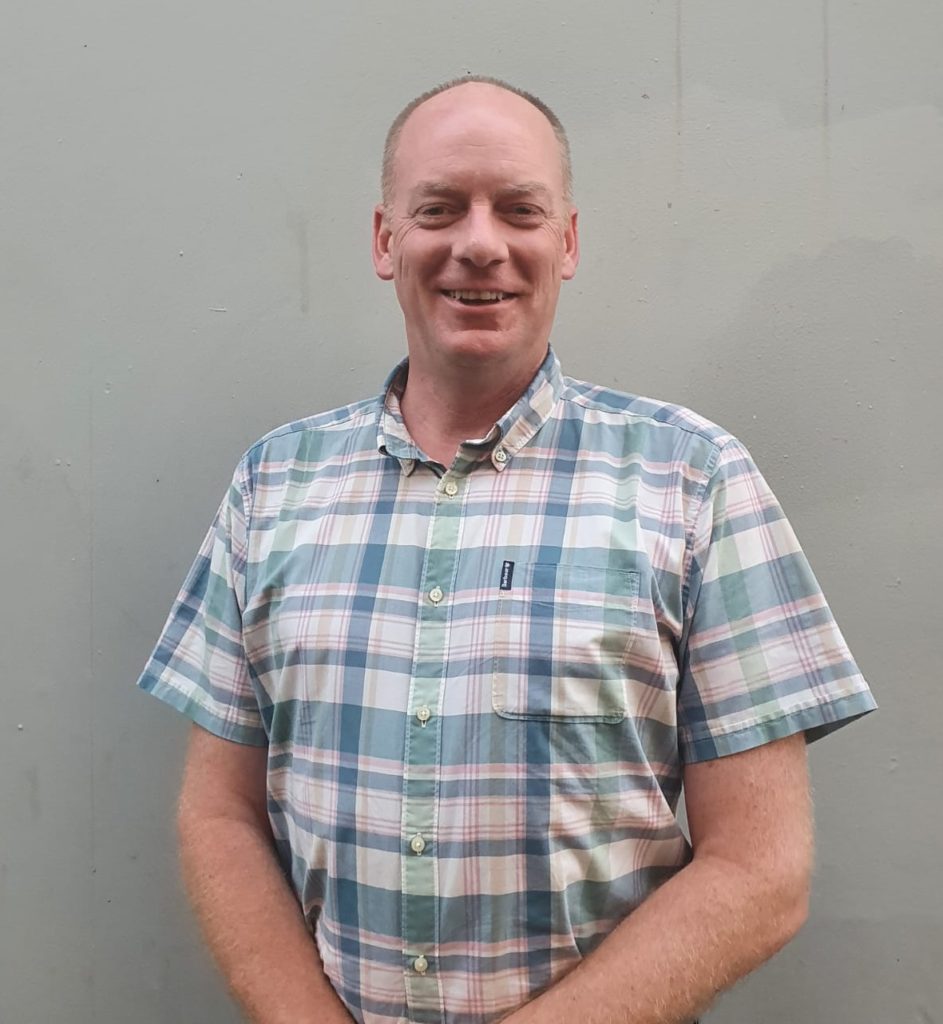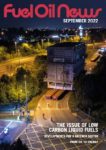Which technologies are being most widely adopted by fuel oil distributor customers?

Digitalisation in general, with mobile working as a key factor, is widespread throughout the industry. An ‘early adopter of digital technologies’, the fuel sector is very much at the forefront of digitalisation and has been using technology for business gain for decades.
Back-office systems, specifically designed for fuel distribution companies to facilitate order receipt, stock allocation, trip planning, reconciliation and invoicing, are proving popular. Often companies will have developed paper-based systems for this, but over many years, we’re finding that the majority of fuel distributors are using some kind of driver application and ruggedised tablet device.
This is always a significant investment, but it clearly offers good pay back from an efficiency, accuracy and safety perspective. Some companies with larger fleets also use a dedicated route optimisation tool like Ortec to help ensure minimum distances are driven while the fleet is out delivering.
Why do you think this is?
Fleet size/cost is one of the most expensive elements of fuel oil distribution, so anything that can be done to enforce standards and add efficiencies, creates savings. Since most operators now have systems like this, it’s seen as necessary to keep up with the competition, particularly where end-customers have a choice of provider. Also, the enhanced safety aspects contribute to brand protection, which is hugely important in this industry.
Are there any technologies that are being requested by customers? What do they desire?
From our perspective, we’re returning a lot of real-time data to our customers’ back-office systems, but we also hold this data separately. This means we can create real-time dashboards, so that planning managers can see exactly where their fleets are working, how they are performing against the plan for the day and crucially, what stock is available on each truck.
The result is that users have the ability to react quickly to emergency orders and other requirements. We have more capability to develop on this yet and are consulting with our customers to add new features all the time.
A lot of customers are also asking for What3Words (a proprietary geocode system designed to identify any location with a resolution of three metres). It works well in the fuel industry, especially for those delivering to the farming community, where the delivery post code may represent a huge area. By using the app, the driver can capture the exact location of the tank and navigate to exactly the right spot.
It’s not our technology, but I know several customers that are very interested in integrating it into our solution and also into their back- office solution. Tanks are not usually located directly beside a building and can often be difficult to find. Also, customers may have more than one tank so it’s extremely useful to be able to pinpoint the right tank so that the driver can deliver the correct product.
Can you tell us if/how Covid-19 and the energy transition have affected the demand from customers?
We have two generic types of customers – the first being fuel oil and LPG distributors – and they were both very busy throughout the pandemic. With so many people continuing to work from home, they have seen a huge uplift in delivery requirements.
Our other customers deliver fuel to petrol forecourts. They saw a massive drop in demand during the pandemic since no-one was driving anywhere but, equally, things have now picked up again to pre-pandemic levels.

Many of our fuel oil customers are now offering alternative, greener fuels and they seem to be gaining some good traction with this. Crucially, they are selling new fuels that are complementary to their existing infrastructure.
We’ve been ballistically busy with projects for the first half of the year. As companies have emerged from the covid crisis, they’ve decided they’re now ready to look at the things they put on the shelf. As a result, we’ve been signing up new customers such as BATA, Par Petroleum and Alan Stobart (part of WCF group), and Rix has also committed to a big upgrade project with us.
How do you gather feedback from customers?
We hold regular review meetings and occasionally put in requests for marketing case studies. We also attend exhibitions and do one- to-one ‘speed dating’ conferences, which are really effective.
Can you tell us more about any current projects in the fuel logistics industry?
We’re working with Par Petroleum on a project that has just kicked off. They’ve got eight commercial trucks that they’re moving from a paper-based solution – that involved a lot of manual data entry and reliance on old technology – to a new state-of-the-art, in-cab solution, that will automatically populate their back office with real-time information.
We’re also just kicking off a project with Alan Stobart in Carlisle. All WCF depots/fleets now use Touchstar devices and this is the last depot to be done. Again, they wanted to move away from a paper-based system to an in-cab device. They already have a truck tracking solution but want to take it out because our system now does that too via our mapping console (a new product that we’ve been building for the last two years).
What are the key areas of focus for TouchStar at present?
There are two big areas at the moment. The first is completing android migrations for our current customers, and this is moving at pace. The second is expanding our customer base to Europe, the States and South Africa. We already have market saturation in the UK, so we’re taking our solutions further afield.
Can you tell us more about TouchStar’s recent strategic partnership with HMK Bilkon? How did it come about and what are you hoping to achieve together?
Danish meter manufacturer and tank builder, HMK Bilkon came up with a new meter that went into the Danish DCC Energi fleet (also a customer of ours) and we subsequently integrated with it.
As a result, Peter Jensby, the company’s MD, came over to see us to talk about how we could try and develop a strategic partnership. They’re interested in selling meters in the UK and we’re interested in selling FuelStar across Scandinavia.
We also have another burgeoning partnership with Leighton O’Brien, a wet stock management company, which is based in Australia but also covers the whole of the Asia Pacific region and the States. They’re very excited about what we do as all their retail customers in the States use paper-based systems with very little visibility, mostly via third party logistics companies.
Partnerships (with companies like meter manufacturers and other software providers) are the way we’re going to get into these other geographies. Ortec, for example, has introduced us to a company in Eastern Europe, while Adapt IT has put us on to a company in South Africa.
Over the next few years, what do you see as the major challenges to the fuel industry and what are the opportunities?
The major challenges are the migration away from fossil fuels, coping with the introduction of alternatives and, also, getting the Government to recognise that the current infrastructure is the best tool to deliver this change.
Basing national strategies on inappropriate solutions is simply not going to create the necessary impact and would be a tone-deaf response. Government needs to listen to our industry experts, who will tell you that all the fleets, terminals, depots, workforce, technologies and other elements of the current supply chain, can readily be adapted to handle many of the new fossil free alternatives. This is most certainly the path of least resistance in terms of keeping costs down and utilising what is already in place, rather than creating costly new channels for energy delivery.
Opportunities are the other side of the same coin. Distributors who can get ahead of the curve with resourcing and distributing HVO and hydrogen etc. will be well placed as the migration really gets going in earnest. But, also, organisations which have robust processes and can put available technologies to good use to create incremental value, will be the ones which adapt best and end up leading the way to a greener future.
What do you enjoy most about working in this industry?
The people. I’ve been selling mobile computing solutions for over 25 years, but the last three years, where I’ve been in the fuels industry, I’ve noticed that everywhere you go, you meet lovely people. I wish I’d discovered this 20 years ago because, in a lot of other industries, the people are miserable, but everyone here just seems substantially happy with what they’re doing; they’re enjoying it and making the most of it.
We work with lots of smaller companies, where we’re often talking to owner managers and it’s personal; I love that personal connection. They might be spending tens of thousands of pounds with us and it’s a personal commitment. Although we’re a PLC, we’re a family at this end, and our values reflect this, and I think that’s part of the reason why we’ve been so successful. We’ll always be flexible, we’ll always try and do our best, and people will always appreciate that. It’s hard to describe really, but they genuinely want to help us help them – it’s a real partnership scenario.

What’s in the pipeline for you, in terms of new products or services?
We’re in the process of migrating our customers from our legacy platforms (Windows CE) to our new Android systems and we’re developing our dashboard and reporting capabilities too.
We’re also developing a new module to make the whole truck WiFi-enabled. At the moment, we rely on cables to connect everything in our old solution, or Bluetooth in our current solution, but we’re going to have a new module soon that will enable WiFi connectivity. Although Bluetooth is really good these days, WiFi is always going to be that bit stronger.
How was the UKIFDA EXPO for you?
Absolutely fantastic. The best exhibition we’ve been to in 25 years! Our feet didn’t touch the floor. We had four people on the stand and every time we turned around there was someone new to talk to, whether that was a customer or a prospect…and deals have moved along significantly as a result of it.
With the ever-increasing rate of technological advance, we are always keen to hear about software innovations that are benefiting the fuel distribution sector. If you believe your product or service merits a mention please get in touch: liz@fueloilnews.co.uk
